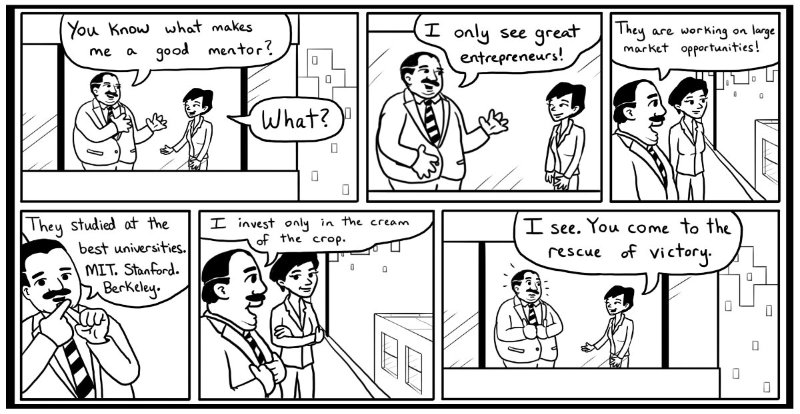Online Education
Tech Layoffs for 2016 Projected to be Deep – What Happens to 260,000 Highly Skilled Professionals in their 40s and 50s?
Following the news on Intel’s layoffs, I read some depressing projections for the rest of the technology industry. Dawn Kawamoto reports in Information Week that 260,000 tech workers will lose their jobs in 2016.
Below are the numbers Dawn has gathered from one Wall Street Analyst’s predictions:
VMware
Estimated percentage of jobs to be cut this year: 10% to 15%
Estimated number of cut employees: 1,700 to 2,500
Symantec
Estimated percentage of jobs to be cut this year: 15%
Estimated number of cut employees: 2,800
>>>
Featured Videos
Can 1M/1M Help Me Raise Money?
How Does 1M/1M Democratize Entrepreneurship Education?
How Does 1M/1M Democratize Management Consulting?
When Is The Right Time To Join 1M/1M?
Can 1M/1M Help Me With Business Development?
Can 1M/1M Help Me With Market Sizing?
Can 1M/1M Help Me Validate My Product?
Will I Have Private 1-on-1 Sessions In 1M/1M?
How Does 1M/1M Help Entrepreneurs Connect With Silicon Valley?
Mentoring or Consulting?
Why Does 1M/1M Charge $1000 a Year?
Why Does 1M/1M Partner With Local Organizations?
Why Don\’t Mentoring Networks Work?
Why Is It Important To Study With 1M/1M Now?
Dan Stewart Story
Vikrant Mathur Story
Intel’s Layoffs: What Will Happen to the Older Workers?
Intel is about to layoff 12,000 people. This is a company with an enormous amount of intellectual horsepower within its folds. Many with very serious intellectual merit will be out.
The semiconductor industry has shrunk, and there aren’t many employers who can absorb that many highly qualified people.
Last summer, Intel had a layoff, although significantly smaller. Intel has a lot of employees in Oregon, and the cuts impacted that state dramatically. Mike Rogoway (@rogoway) at the Oregon Live did some investigative journalism that highlighted the fact that older employees were let go more easily:
Proportionately, employees in their 50s were three times more likely to lose their jobs than workers in their 30s, according to a document obtained by The Oregonian/OregonLive that tallies every Intel employee in the United States. The company was nearly five times more likely to lay off workers in their 60s than those in their 30s.
“Looking at the impact, in this case only, it clearly has disproportionately affected older workers,” said Portland employment attorney Matthew C. Ellis. But he said that’s not necessarily illegal, nor is it unusual. >>>
Women Entrepreneurs – The Myth, The Minefield, The Movement
On March 31st, I gave a talk at Hacker Dojo in Mountain View for the Women Who Code group. In it, I addressed many of the myths about being a female entrepreneur that are currently circulating in the industry. For example:
- There’s a bias against women in Silicon Valley
- You CAN and SHOULD try to DO IT ALL
- VC rejection equals sexism
- VCs hit on women
And many others.
Here’s a recording of the session. I do believe those of you who are navigating these issues would find this useful.
Thought Leaders in Online Education: David Lord, CEO of JumpStart (Part 1)
This discussion takes us into the realm of learning games and their future.
Sramana Mitra: Let’s start by introducing our audience to yourself as well as Jumpstart.
David Lord: I’m the CEO of JumpStart. JumpStart has been the leader in learning-based games for the past 25 years. JumpStart was founded by Bill Gross before Idealab. Our key brands are JumpStart Math Blaster and School of Dragons. We have been educating children, which is our mission, for the past 20 years.
Sramana Mitra: Children of what age do you focus on?
David Lord: We try and build products and subject matter that apply to children of all ages, but our core age range is kinder preparation to K-3. >>>
From $100k to $1 Million: Tyranny Of The TAM
You’ve got customers.
You’ve got some level of validation.
You’ve got, perhaps, a reasonable degree of product market fit.
Now should you charge to the VCs for funding?
Wait a minute. There’s a major issue that needs assessment first and foremost.
Market Size.
What is TAM? Perhaps, the biggest factor in whether a VC funds you or not. TAM = Total Available Market.
>>>
299th Roundtable Recording On March 24, 2016: With DFJ Venture’s Heidi Roizen
In case you missed it, you can listen to the recording here:
March 31: Sramana Mitra Speaking To “Women Who Code Silicon Valley”
On March 31st, from 6:30 p.m. to 8:30 p.m. PDT, Sramana Mitra will be giving an interactive talk entitled, “Women Entrepreneurs: The Myth, The Minefield, The Movement,” for Women Who Code Silicon Valley at Hacker Dojo in Mountain View, California. She will discuss why talented women should not quit, how her fellow engineers and others can become entrepreneurs, take risks and not lose their sense-of-self. Beforehand, please check out some of Sramana’s writings on the topic here.
Location:
Hacker Dojo, Large Event Room
599 Fairchild Drive
Mountain Vew, CA 94043
>>>
Thought Leaders in Online Education: Norm Wu, CEO of i-Human Patients (Part 1)
There will be an acute need for trained medical professionals as healthcare becomes democratised around the world. Norm discusses what his company is doing in this very important realm using online education principles.
Sramana Mitra: Let’s start by introducing our audience to yourself as well as to i-Human Patients. What do you do? What trends are you working with?
Norm Wu: I’m a serial entrepreneur. Even in high school, I had a little bit of entrepreneurial experience. I was one of the co-founders of the campus radio station. I became very interested in technology. I started working in Silicon Valley after getting my BS and MS at Stanford. I worked on reconnaissance systems for the defense industry. This was during the Cold War when we really needed to understand what the bad guys were doing with respect to radars and missiles. >>>
From $100k to $1 Million: How to Choose a Business Mentor
These days, everyone seems to be a startup mentor. Whether they have ever done a startup or not, whether they have ever raised money or not, they are ready to advise entrepreneurs.
To those entrepreneurs looking for a mentor who can help you accelerate your business, please keep the above points in mind.
You need someone who is willing to tell you what you NEED to hear, not what you WANT to hear.
>>>
Thought Leaders in Online Education: Jon Mott, Chief Learning Officer, Learning Objects (Part 1)
Some thoughts on learning objectives driven instructional design.
Sramana Mitra: Let’s start with introducing our audience to yourself as well as to Learning Objects.
Jon Mott: I’m the Chief Learning Officer at Learning Objects. My responsibility at the company is to bring a learning science, higher education, and learning design perspective to both our product development and to implementations with clients. My background is both in academia and instructional design, as well as corporate education, adult learning, and corporate training.
Throughout my career, I’ve really had this focus on, “How do we help individuals acquire the knowledge, skills, and abilities they need at any given point in time to pursue goals related to the next things they’re trying to achieve in their lives?” >>>


